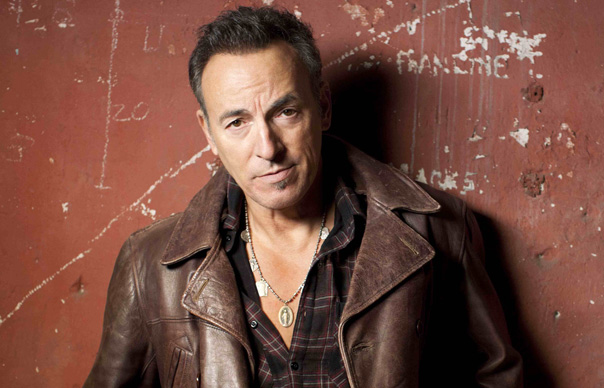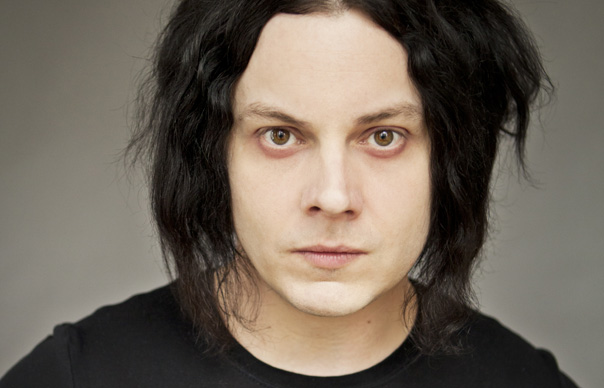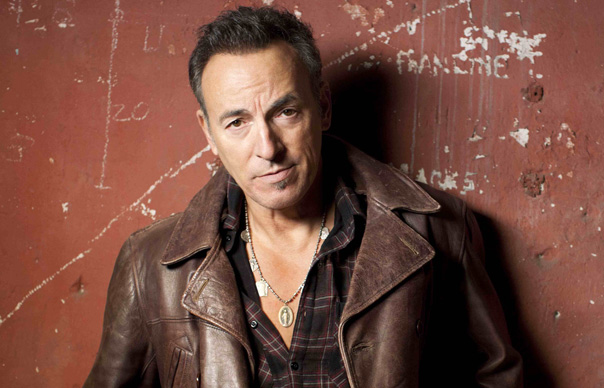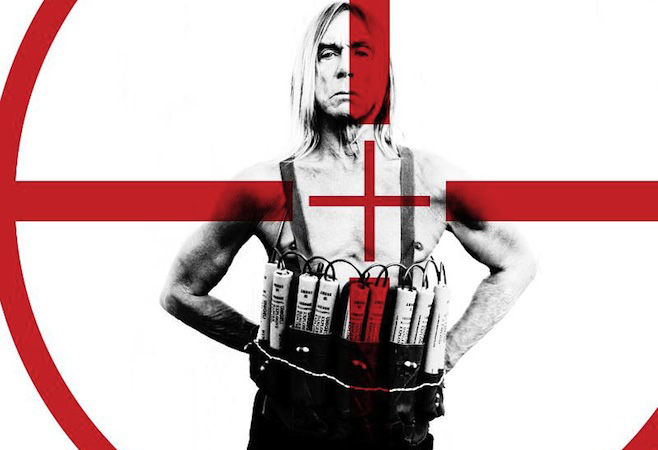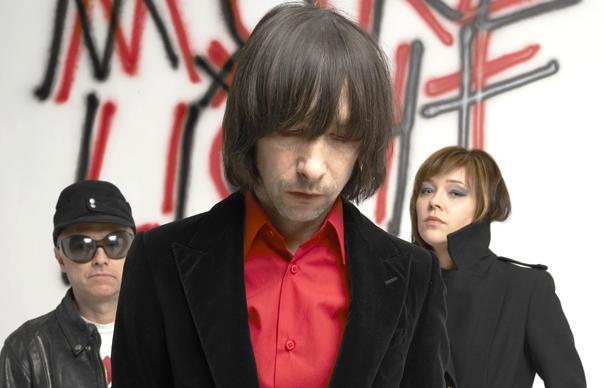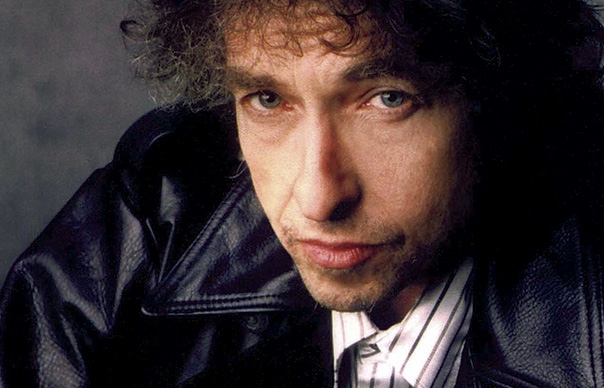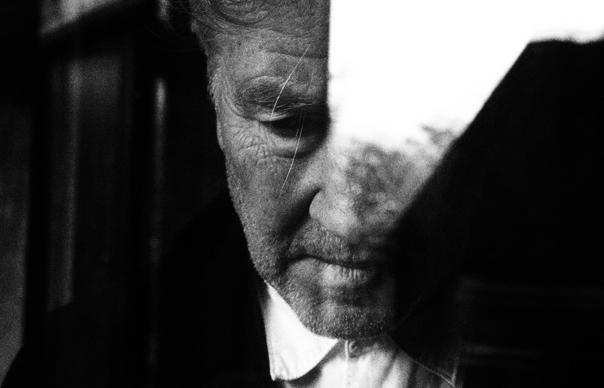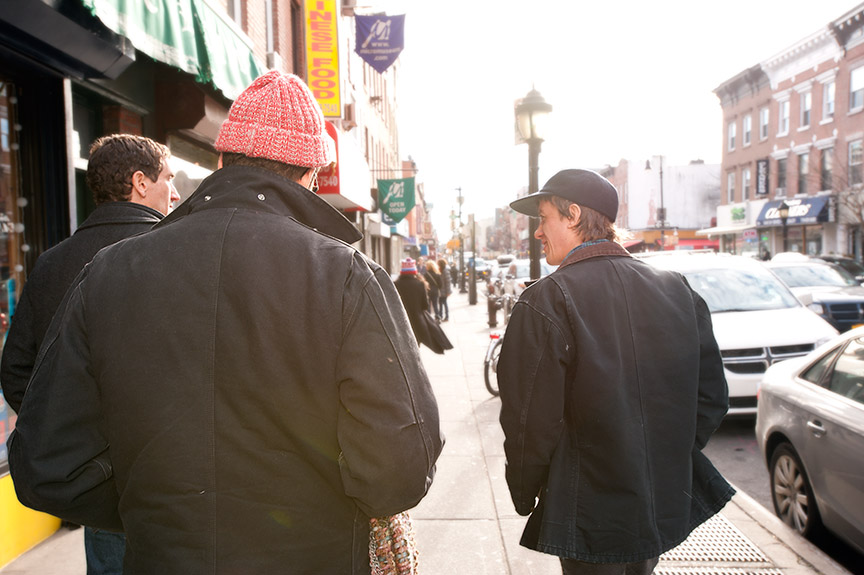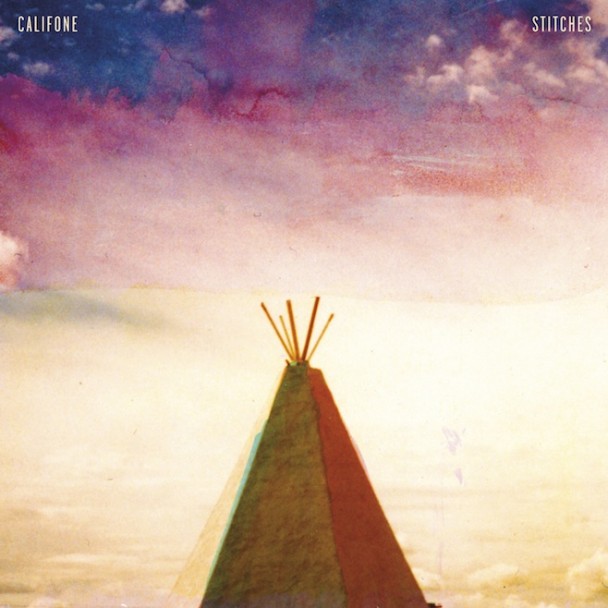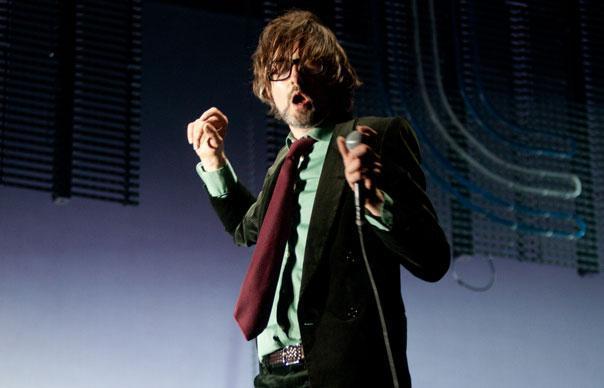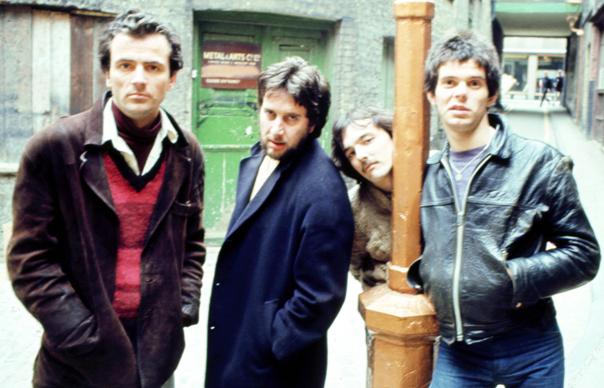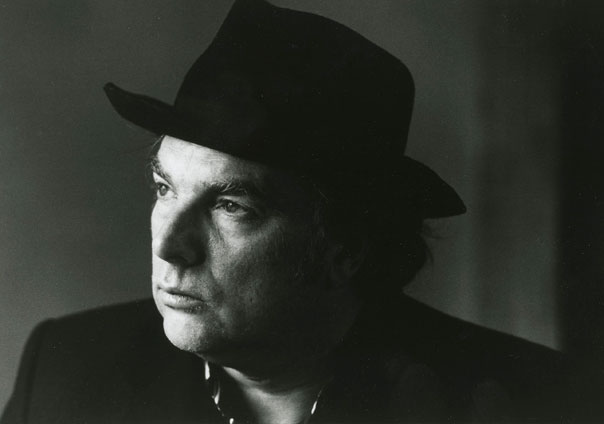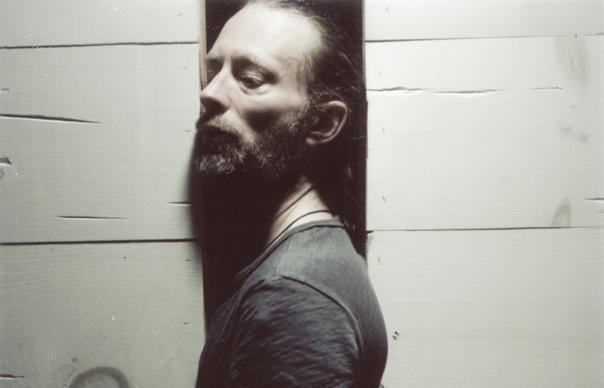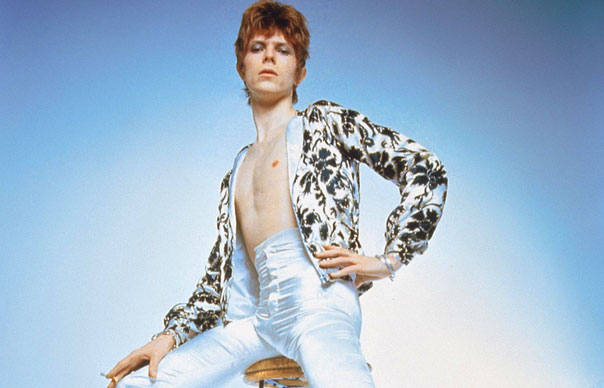From Uncut’s September 2002 issue: In one of the most revealing interviews of his career, Bruce Springsteen talks exclusively to Adam Sweeting about his new album, The Rising, much of which was written in the aftermath of September 11, and which reunites him with the E Street Band for their first studio album since Born In The USA.
Bruce Springsteen: “I think I just wanted to be great” – Part 2
Bruce Springsteen: “I think I just wanted to be great” – Part 3
________________
If all you’ve ever seen of New Jersey is Newark Airport or the bits they show you in the opening sequence of The Sopranos, you will have assumed it’s a grimy jungle of factories, warehouses and shopping malls interspersed with toxic waste dumps. It’s the kind of place where they’ve given up trying to count the number of corpses stirred into the concrete buttresses holding up the freeways. But keep driving for a couple of hours away from Manhattan and, eventually, you discover why cars in Jersey have “The Garden State” stamped on their number plates. Once the dismal miles of urban blight have receded into the rear-view mirror, it’s startling to find the landscape opening out into undulating acres of woodland and lush green grassland, with the occasional picturesque lake thrown in for good measure.
Whatever mythology may surround New Jersey, Bruce Springsteen has been a substantial contributor. He was born in Freehold, NJ on September 23, 1949, a few miles inland from the seaside resort of Asbury Park which would become the laboratory for his songwriting and the birthplace of the E Street Band. One of his earliest songs was titled “Garden State Parkway Blues.” The last song on his new album is called “My City Of Ruins,” and you’d imagine it was about New York in the aftermath of September 11. In fact, he wrote it a couple of years ago about Asbury Park, a bedraggled and down-at-heel town living in hope of investment and redevelopment. Asbury Park now has a street dubbed Boss Boulevard, and the New Jersey legislature was grateful enough to one of its best-known sons to anoint “Born To Run” as the state’s official rock anthem.
In the early ’90s, Springsteen and his family – which now comprises wife Patti, two sons and a daughter – shuttled between homes in Jersey and California, where Springsteen’s parents had gone to live in the late ’60s, but lately they’ve shifted their centre of gravity back east. Most of the time, home is a farm in Colts Neck, nestling in the midst of gymkhana country in rural Jersey but not far from either Asbury Park or Freehold. As he once put it, “Where you come from is like your family and your best friend.” Most of the farm’s acres of pasture are screened from the main road by trees and hedges, though locals can sometimes catch a glimpse of Mr and Mrs Springsteen out horse-riding.
As we turn in through the gate and scrunch up the gravel driveway towards the house, Springsteen saunters out across the front lawn to say hi. In a loose-fitting shirt, jeans and motorcycle boots, he looks more like the guy who’s come to grease the gearbox on the tractor than the neighbourhood rock’n’roll superhero. The sun is searing down under a perfect blue sky, so he leads the way indoors where the climate is controlled and the fridge is packed with cold drinks.
“My friend, you are experiencing a classic Jersey summer’s day,” he announces with proprietorial bonhomie.
We settle back in a couple of chairs in the living room, with mineral water and an ice bucket on the table. The room is cool and comfortable, furnished in down-home Jersey Rustic rather than designer minimalism or arthouse chic.
“This area has been quite a sanctuary for me over the years,” Springsteen reflects. “I’d say we have as relatively normal a life as possible under the circumstances – where everybody knows your music and knows who you are – but you can go to the carnival, you can go to the circus and nobody really bothers you. You can go to the boardwalk on a jammed Saturday night where there’s a thousand people there and it’s fine. People will look and say ‘Hello, how you doing?,’ it’s all just… it’s all very do-able without much hassle, y’know?”
The upstanding citizen, he’s happy to be on call for collecting the local kids from school and ferrying them home or to sports meetings. He plays coach to his eldest son Evan’s baseball team. Sometimes on Halloween, he and Patti invite the Boy and Girl Scouts around to their house. “It’s just regular stuff, y’know,” he shrugs. “It’s nothing unusual.”
Even when his fame reached hysterical dimensions during the Born In The USA period in the mid-’80s, Springsteen always tried to keep at least one boot planted on the ground. In Los Angeles at the shrieking zenith of Bossmania, he once amazed Tom Petty by strolling down to Tower Records on Sunset Boulevard to load up with a few new waxings. He even paid for them himself.
“I think you have to make a point of behaving like a human being,” ponders the mature tunesmith. “I understand people who feel very uncomfortable at a certain point with the amount of notoriety and attention. On one hand, obviously, you go out and you ask for it, you shake your butt in front of 20,000 people and part of the artist thing is that artists are narcissistic and self-involved and ego-driven and bottomless to some degree in their needs and what they want. That comes with the turf, I believe.”
This prompts one of many outbursts of wheezy laughter. When Springsteen’s funny bone gets tickled, he can sound incongruously like Dick Dastardly’s dog, Muttley.
“So the question is, ‘OK, that’s me, but how do I manage those things? Do I manage them well?’ In the end it’s the measure of your ability to deal with the whole thing. I’ve met people who are nervous about going out for one reason or another, but what we did was always kind of ‘Hail brother!,’ You know? I think it transferred over to some of the people who listen to us and so they give you a reasonable amount of space. There’s really nothing to it. You may have to insist on it slightly – ‘I’m gonna do this no matter what’ – but particularly in the past decade or so, when I’ve been less in the limelight, it’s just very easy and very manageable.”
Naturally, there’s a little sleight of hand involved. There’s a discreet security cordon around the Springsteens, and nobody gets close to the house without submitting to a brisk once-over from the guards. The estate is also protected by any number of unseen electronic safeguards. After recent events in America, precautions are mandatory.
Does he worry about kidnapping or terrorism?
“Well, it’s one of those things. A little girl was kidnapped near here not long ago. It was some people who’d moved down from the city and she was on the lawn and luckily they got her back, and it had been done by somebody who was very… misguided, y’know? But it comes with the job a little bit. There’s a certain level of security conciousness, and I do take extra precautions that a normal guy doesn’t when it comes to my family and that sort of thing.”
________________
The reason Springsteen has allowed Uncut to cross his perimeter is to put the word out about his new album, The Rising. While it would be an over-simplification to say the disc is exclusively ‘about’ the events of September 11, what happened that day and the aftershocks that continue to ripple out from it delivered a powerful jolt to Springsteen’s creative processes. Among the album’s themes you can pick out loss, faith, incomprehension, fear and hope, and even some all-join-hands celebration. As much as anything, the songs reflect the effort involved in trying to adjust to a world where the things you thought were stable and unchanging might suddenly split open to reveal a howling void beneath.
“To me, it feels as rocky as any time since the Cuban missile crisis,” Springsteen reckons. “I don’t know if we’ve lived in as volatile a moment since that time, a moment where it feels like there’s a lot of forces loose in the world that could go either way. There’s a tremendous need right now for good leadership and I’m not sure that I see it out there, so it’s a very, very volatile moment in world history without a doubt.
“I’m certainly concerned, and I know my kids are frightened. They go ‘The terrorists! The terrorists!’ They take it in, and it’s become as much a part of their childhood language as the atom bomb was for us in the ’50s, and diving under the school desk, y’know? My son’s always saying, ‘What if there’s a terrorist at the movies?’ I’d have to go back there to remember a particular time in recent history when it’s felt like this.”
The perilous and lopsided state of the planet had a galvanising effect on his working methods. The man who once ground his way through 5000 interminable studio hours while dragging Born In The USA to completion, and who recorded 60 songs en route to whittling down to the final 20 which made it onto 1980’s The River, found himself galloping ahead at breakneck speed.
“With the exception of two or three songs that I had already, the body of the record was probably written between September and… we finished up in May – about five or six months,” he recalls. “The songwriting itself was not time-consuming. The songs formed themselves pretty quickly and I had a process where I’d demo them pretty fast because I have a studio set up – a room like this, a living room – and it enabled me to see if it was a good song. That really helped me weed through a lot of different ideas I had. But the songs were written quickly.”
For Boss-o-philes, the big news is that The Rising is the first studio album he has made with the E Street Band since Born In The USA in 1984, although combinations of E Streeters appeared on 1987’s Tunnel Of Love. Aside from a couple of isolated episodes, band and Boss didn’t perform together between the end of 1988 and spring 1999, with the reunion preserved on last year’s Live In New York City. After such a protracted separation, Springsteen knew they had to take at least one step up from where they’d left off. Where the live album, The Ghost Of Tom Joad (1995) and 1998’s archive-trawl Tracks were all credited to the co-production duo of Springsteen and long-serving studio sidekick Chuck Plotkin, this time he felt the need for fresh thinking and some different hands on the tiller.
Enter Brendan O’Brien, whose production and mixing skills have made him studio guru du jour for a swarm of cutting-edge hard rock bands, from Pearl Jam and Soundgarden to Korn, Limp Bizkit, Rage Against The Machine and Stone Temple Pilots. Not to mention the more lived-in likes of Bob Dylan, Aerosmith and Mick Jagger.
“I’d heard Brendan’s records in the mid-’90s,” says Springsteen, “and they were just powerful rock records, y’know, like Pearl Jam. I just thought they sounded really good. I’d probably been thinking about working with somebody else for five or so years. After the tour, I’d recorded with the E Street Band for a couple of weekends in the studio. Everybody sounded great, but it wasn’t quite what I felt was gonna be called for if I was gonna make a record with the band again. I felt it had to live up to the history of work we’d done, and I knew I didn’t know how to do that.”
Bruce kicked it around with his manager and sometime co-producer Jon Landau, who also felt he wasn’t sufficiently well-versed in current studio techniques to climb back into the producer’s chair.
“We just got to a place where my abilities as a producer had reached their limits,” Springsteen admits. “I was not in the studio regularly enough or recording enough different kinds of music. The sound of things changes every eight to 10 years, just the sound of records on the radio – the way the drums sound, the way the voice is treated – and those were the things I didn’t know a lot about. I said I can’t do justice to the band at this point by producing this thing myself or with Jon, so we said let’s meet some other people. We knew we’d do a fine job on our own if we had to, but let’s meet some other people and see what their ideas are.”
A meeting was duly set up with O’Brien, and Springsteen dug out some demos of a couple of unrecorded songs, including “Nothing Man” and “Further On (Up The Road),” which would both eventually find their way onto The Rising. Both had been written prior to the unwelcome arrival of Al Qaeda over lower Manhattan. O’Brien listened, liked what he heard, and began to form a mental picture of what a Springsteen/E Street album ought to sound like in 2002.
“Really, it just came down to, ‘We’d like to record some good songs if we can and we’d like it to be exciting’,” says Springsteen, “and basically he said ‘Yeah.’ He said, ‘I have a studio down south and I like to work there, but I can work anywhere,’ so I said, ‘Let’s work where you work and where you’re comfortable.’ We made a date. He came back one other time and I’d demo’d ‘Into The Fire,’ I had a funky little demo of it at the time, and I had ‘You’re Missing,’ and together we demo’d that and we worked together. It was something I hadn’t done in a long time, to really collaborate over the structure and creation of one of my songs – I was used to doing all that myself. So we’d say, ‘Oh, how about this in the bridge? How about this chord? How about we move this here? How about we wait this long?’ Brendan is a musician himself, he’s very musical and he had a lot of good ideas, so we went down south to Georgia and went into the studio.”
________________
Before you could say “Rosalita”, the sparks started flying on E Street. “We played ‘Into The Fire’ two or three times. We came out, sat down, and in about 20 seconds I realised this was my guy, y’know? The band sounded like the band, but not like I’d heard them before, and that was what I was looking for. I wanted it to be like ‘this is the way we sound right now’, something that my audience who have been following me for years will recognise and it will also be new for them. That was it, it was what I was looking for. I said, ‘Well, as long as I can write some songs’… and I had two good ones there. I’d also written a couple of good ones on the last tour, ‘American Skin’ and ‘Land Of Hope And Dreams’, so I said, ‘Well, y’know, I think I can find my rock voice.’ For a while I wasn’t sure if I could find that voice again, because I knew I didn’t want it to be the voice from Born In The USA, which was really the last time I sang that way.”
As the sessions developed and they began to feel at home in Southern Tracks Recording in Atlanta, Springsteen found he didn’t really need to worry. The songs he was writing arrived carrying their own sets of instructions about how they wanted to be performed and arranged. In the weird atmosphere of trauma and disorientation in the post-September 11 fallout, he found himself acting virtually as a receiver of messages flashing in from his own sub-conscious or from out of the disturbances in the collective ether.
“I think the second or third week in September I’d written ‘Into The Fire’ for a telethon [America: A Tribute To Heroes] they had here in the States after 9/11, and I was gonna sing it on the telethon, but instead I sang a song I already had called ‘My City Of Ruins.’ Then I wrote ‘You’re Missing’, then after that I woke up one night and I had this song, ‘The Fuse,’ and so all of a sudden you have elements of the story you’re compelled to tell at a certain moment. That you’re kind of asked to tell. Then you look at it and listen to it and it begins to say, y’know, there’s just a wide variety of emotional elements to make it thoughtful and complete, and the songs kind of present themselves as such and in that fashion.
“It’s not necessarily linear and it’s not necessarily directly literal – in fact, hopefully it’s not really literal. That was something I was trying not to do. I wanted to feel emotionally in that context but not directly literal, though on some songs I was gonna be more literal than on others. Those songs kind of anchored the theme of the record, so when you get to the other ones you start to look into it and check the verses and realise it’s a piece of the whole thing. That was pretty much how it developed, very instinctively. It wasn’t over thought-out.”
In other words, it was the polar opposite of the songs on The Ghost Of Tom Joad, which were long, evolving narratives painstakingly assembled from fine detail and closely-observed characterisation. The only one of the new songs vaguely in that vein is “Nothing Man”, apparently a vignette of a small-town character who becomes a local hero after some unspecified act of heroism.
“Right, and that I wrote in 1994,” Springsteen nods. “This album is the opposite end of the lyrical spectrum. There’s detail, but it was a different type of writing than I’ve done in a while. It was just sort of pop songwriting or rock songwriting, y’know? I was trying to find a way to tell the story in that context. One of the things I learnt on some of my earlier records where I tried to record the band… for instance, on Nebraska, immediately the band played those songs they overruled the lyrics. It didn’t work. Those two forms didn’t fit. The band comes in and generally makes noise, and the lyrics wanted silence, y’know? They make arrangement, and the lyrics wanted less arrangement. The lyrics wanted to be at the centre and there was a minimal amount of music. The music was very necessary but it wanted to be minimal, and so with The Rising I was trying to make an exciting record with the E Street Band which I hadn’t done in a long time, so that form was kind of driving me.”
With O’Brien a reassuring presence in the control booth, Springsteen felt able to focus on writing and performing. “Brendan had a particular, distinct aesthetic point of view where he said, ‘Yeah. I think this is working on this, but this makes it sound like that,’ y’know? So this was a situation where I trusted his viewpoint very intensely, and I had a lot of faith in where he thought the thing was going to go soundwise.
“The guitars were brought way up front, the keyboards were put in a different spot, things sounded a little different. We used a variety of different tape loops, and we had a lot of different found sounds going on – everything to sort of not go to the normal thing that we’d done in the past. The essential thing was to get the band to feel sonically fresh. He knew exactly what to do there, so I got to kind of sit back and do the singing and the playing and the songwriting.”
________________
Although on occasions Springsteen has seen his music being claimed by politicians from either end of the spectrum – Ronald Reagan and his Democratic rival Walter Mondale both tried to steal some of his Born In The USA thunder in 1964 – his focus has remained resolutely on the personal and the particular. On that occasion Springsteen was careful to distance himself and his work from both candidates. Eighteen years later, he feels no more inclined to take political sides, and earlier this year he rebuffed efforts by an activist group called Independence For New Jersey to put his name forward as a candidate for the US Senate. He quoted General William Tecomseh Sherman, who refused to seek the presidency in 1884. “If nominated, I will not run,” declared The Boss, tongue presumably in cheek. “If elected, I will not serve.”
Hence, his new songs deal with individual emotions and spiritual concerns rather than American foreign policy or the disastrous incompetence of the FBI. Besides, he’s well aware that nothing will go out of date more quickly than an album picking over the debris of yesterday’s news. However, he has made an explicit gesture of looking beyond the US with “Worlds Apart”, a song with a pungent Eastern flavour thanks to a guest appearance by the Pakistani qawwali musician Asif Ali Khan and his band. Under Chuck Plotkin’s supervision, they recorded their contribution in a Los Angeles studio hooked up to the sessions in Georgia via an ISDN link.
“I came up with ‘Worlds Apart’ and I started to fool with some mid-Eastern scales in some of the background parts,” Springsteen explains. “Asif Ali Khan happened to have a record coming on Def Jam, and they happened to be in L.A. Via the ISDN line we were able to have a session across country, and they sang and played beautifully. It was very exciting to hear that sound in the middle of a rock song. I was trying to look outside the United States and move the boundaries of the record in some fashion. I think the song started when I saw a picture of the women in Afghanistan with the veils off a few days after they’d routed the Taliban out of Kabul, and their faces were so beautiful.”
Doesn’t he fear that hawkish commentators might accuse him of giving comfort to the enemy?
“Anybody can say anything,” he says with a what-the-hell gesture. “I don’t know, nothing surprises me at this point. People interpret things all different kinds of ways – it was just great Pakistani musicians and they sang beautifully. Who knows? Like you say, people come at things six ways from Sunday, but I think if someone listens to it, it just worked really well musically and they were great people and great musicians.”


